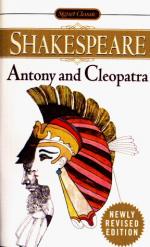|
This section contains 5,087 words (approx. 17 pages at 300 words per page) |

|
SOURCE: "Antony and Cleopatra: The Stillness and the Dance," in Shakespeare's Art: Seven Essays, edited by Milton Crane, The University of Chicago Press, 1973, pp. 79-113.
In the following excerpt, Mack argues that Antony and Cleopatra "owes much, at least in its general outline, to the medieval tragic formula of the fall-of-princes and mirror-for-magistrates tradition."
Considered as pure story, the play that Shakespeare makes of Antony and Cleopatra would have delighted Chaucer's Monk. For it obviously owes much, at least in its general outline, to the medieval tragic formula of the fall-of-princes and mirror-for-magistrates tradition, which the Monk enunciates to the Canterbury pilgrims, and which was still, in 1607, owing to a good deal of Elizabethan dramatic practice including Shakespeare's own, far better known than Plutarch to playhouse audiences. Tragedy, according to this formula, is what happens when eminent historical personages lose their foothold on the pinnacle of wealth or...
|
This section contains 5,087 words (approx. 17 pages at 300 words per page) |

|


